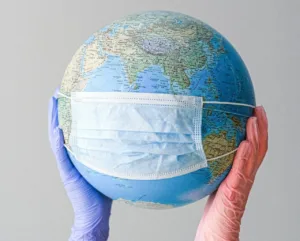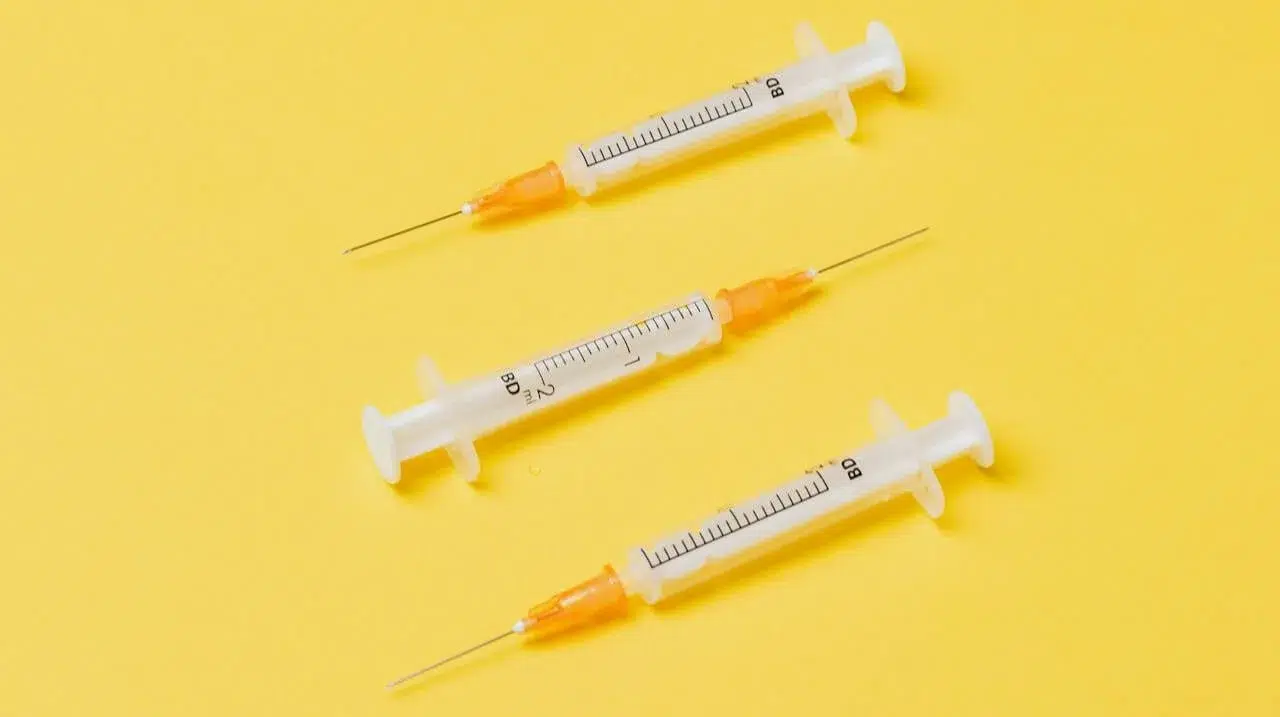It seems like there’s a teeny tiny glimmer of light at the end of the COVID-19 pandemic tunnel. With the roll-out of both the Pfizer and Moderna vaccines — and the news the UK’s Oxford-AstraZeneca vaccine has been submitted for approval in the UK — it looks like we’re edging towards a return to a more normal life.
Of course, it’s not all going to be smooth sailing, and there are already questions about the long-term efficacy of the vaccines, debates over who should receive it first, and moral debates at stake over the negotiating power of rich countries leaving poorer countries without adequate access to the vaccines.
However, less than a year into a pandemic that feels like it’s stretched several lifetimes, it’s beyond miraculous that we have a vaccine and that ordinary people, along with front-line workers including surgeons and other medical staff, are already lining up to do their part in ending this terrible period.

The real miracle is the science and the hard work and determination of the men and women who have toiled to get us here. To put things in perspective, the Pfizer/BioNTech jab is the fastest vaccine to go from concept to reality, condensing a process that normally takes 10 years into 10 months.
There is Still A Lot of Mistrust When It Comes To Vaccines
An end to the pandemic cannot come soon enough for the many hospitals and ASCs that have had to cancel or postpone surgery yet again as COVID-19 numbers surge in their areas. Part of ensuring that can happen is prioritizing health-care workers to get the vaccine, as recommended by the Centers for Disease Control and Prevention, and helping to ensure that they can get through the backlog of people in need of medical attention because of the stop-start-slowdown in elective surgery throughout the year.
Unfortunately, there is also work to be done to get medical staff vaccinated and overcome vaccine reluctance or mistrust. According to Becker’s Hospital Review, many staff at Howard University Hospital in Washington, D.C. have expressed reservations over being vaccinated.
In another example, many workers at Doctors Hospital at Renaissance in Edinburg, TX turned down the vaccine so the hospital offered doses to other medical workers in the region, and it’s doubtful they are alone.
But Vaccinations Have A Proven Track Record

Thanks to vaccinations, we live in a world, at least those of us privileged to live in a “first-world” country, in which many childhood diseases, those that spread fear and panic through homes and families when an outbreak was reported, have been essentially eradicated (think polio) or are at least very much under control.
That wasn’t always the case. For much of the 20th century, deaths from polio, diphtheria, and smallpox exceeded 60,000 per year in the United States. Fast forward to 2016 and deaths from these three deadly diseases were zero. Magnify that around the world and vaccinations prevent two to three million deaths from these diseases and others, including measles, rubella, and tetanus each year.
With the surety that history repeats itself, COVID-19 will not be the last time people hunt desperately for a solution when faced with a seemingly unsolvable medical crisis. They’ve been doing it for hundreds of years.
A (Very Abridged) History of Vaccines

While many people are familiar with the story of Edward Jenner and his discovery of the smallpox vaccine, Chinese and Indian physicians were already trying to fight against smallpox as far back as the 1500s.
And, while opponents of vaccines often focus on the ingredients in vaccines, some accounts from China in the 1600s suggest that doctors tried to inoculate against the disease by grinding up smallpox scabs and blowing them into the patient’s nose through a silver tube. So, let’s be grateful we’ve moved on from that.
In other early immunization attempts, Buddhist monks apparently drank snake venom to confer immunity to snake bites, and by the 17th century, the Chinese had moved away from blowing scabs up the nose to smearing a skin tear with cowpox to confer immunity in a process known as variolation.
However, it took until 1798 for the first smallpox vaccine to be developed, and it wasn’t until 1979 that smallpox was eradicated globally, which seems like a terribly long time.
But Jenner’s vaccine was just the first.
While Louis Pasteur might be better known for making milk safe to drink, he was also active in the field of immunology. Inspired by Jenner, he conjectured that a vaccine could be found for all diseases.

He started by discovering a chicken cholera vaccine after serendipitously discovering in 1879 that old bacterial cultures lost their virulence. The eureka moment happened when Pasteur asked his assistant to inject the test chickens with a fresh batch of viral bacteria before the start of a holiday. The assistant forgot and only got around to doing it when he returned, presumably rather guilty, a month later.
The delay turned out to be good for the chickens and very good for us. Unlike some of the earlier test chickens, who had all died after being vaccinated, the chickens who received the delayed shot only showed mild disease symptoms and were soon back on their feet. Once they were healthy again, Pasteur injected them once again with the live bacteria, and nothing happened.
As a result, Pasteur realized that being exposed to oxygen made the bacteria less deadly and the live attenuated vaccine was born. This is the type of vaccine still used to this day to vaccinate against a range of diseases, including mumps, rubella, varicella (chicken pox), and measles — and it’s all thanks to a group of lucky chickens and a forgetful assistant.
Just as there has been “accidental” success in the past, the testing mechanisms and sophistication have certainly advanced and the world has now placed all of our hope in overcoming this pandemic in the power of this one (or two-dose) shot.
It Will Still Take Time

Defeating the pandemic is going to take time and continued adherence to rules before we can return to normal. First, we need time to inoculate the population, and cannot disregard social distancing even thereafter. But the good news is that based on the findings thus far, there’s definitely light at the end of the tunnel, even if we don’t know just how long the tunnel might be.
As we head into 2021, we wish you a peaceful and healthy New Year and a return to full strength in the coming 12 months.




